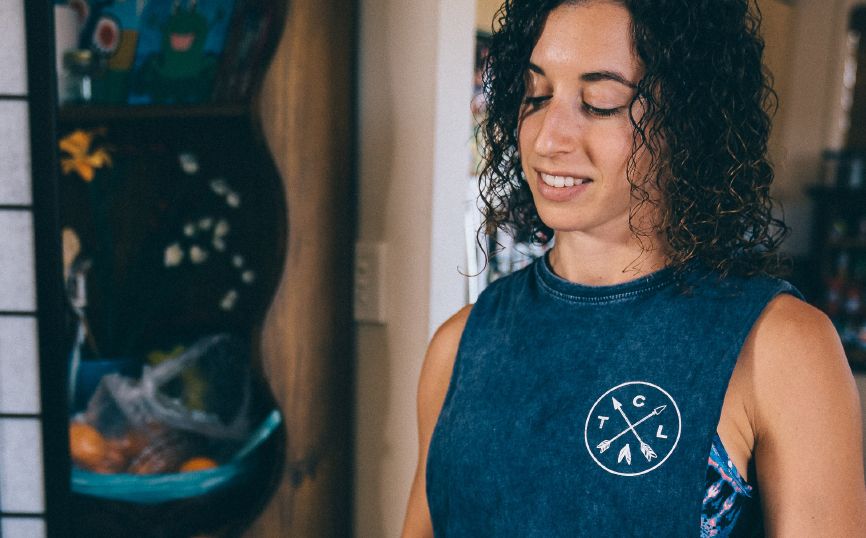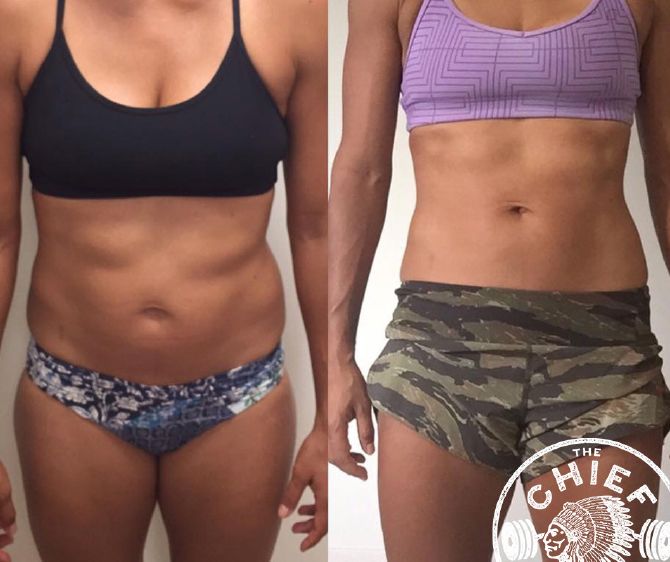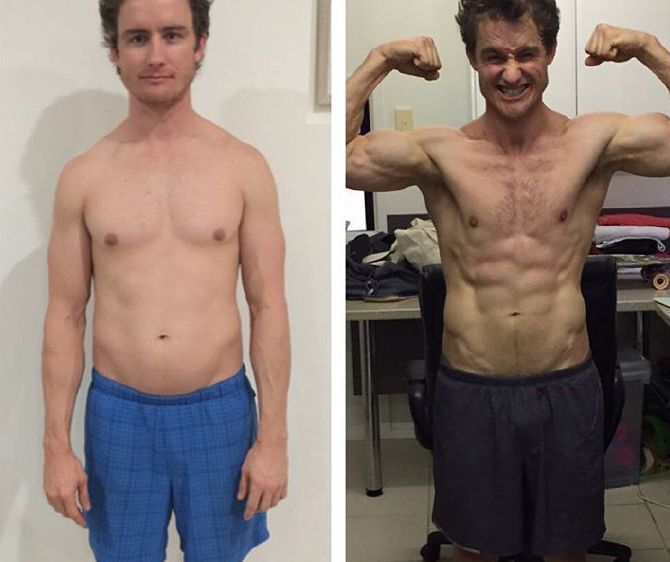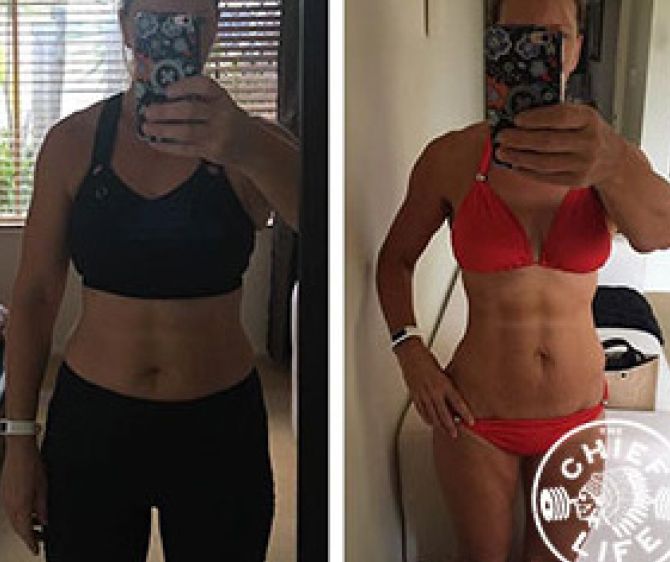ONE ON ONE
take ACTION and
live the chief life
You’ll receive a full health assessment, a basic nutrition education and guidance targeted specifically towards you and your current health and fitness goals. This package also includes a fully customised meal plan, which will be created after the initial consult and based on the information collected during the consult. We can do it face to face, via Skype or Facetime.
WHAT YOU GET

complete health assessment
For the first half of the session I will sit down with you and collect information regarding your health and family history, lifestyle and schedule, current health status, goals and current eating habits. This will assist me in creating the plan that will help you get where you want to go and also personalise the education part of the consult to your needs.

nutrition education and guidance specific to you
During the second half of the session, I will break down the science behind the way you’ll be eating, discuss nutrition basics with you around food timing, quality and quantity and chat about gut health and how it affects your overall health and wellbeing. I’ll also help you to figure out your why to make focusing on your goals easier and more actionable.

fully customised meal plan tailored to you
The team of Chiefs will create your plan based on your likes, health status, goals and measurements to ensure you have the meal plan that is suited to you as an individual. The focus is on eating real food, and we can cater to all nutrition needs.

WHY STACEY HARRIS?
Stacey is all about health & wellness, for herself and her clients. Stacey takes a judgement free, empowering approach and loves getting to the core of your habits to take you to greater heights. Specialising in food allergies and intolerances, gut health/dysfunction, adrenal fatigue, fat loss, improved energy, muscle gain, performance, kids and general health and well-being, Stacey will help you identify and create positive habits in food and life.
professional, personal
coaching, now just $299
BOOK YOUR 1 HOUR ONE ON ONE
Stacey will contact you personally to confirm a date and time

ALITI

NOAH

SARAH
FAQ
How long will it take to get my meal plan, training program or combo package?
We have a 7 day turnaround as we need time to sit down and go through your questionnaire and tailor the required template to your needs. We are normally faster than this and most likely you’ll receive earlier than 7 days.
What kind of diet/nutrition plan is this?
Our nutrition plans are based on balancing good quality food in the correct portions depending on what your goal is: muscle gain, performance improvement/energy increase or fat loss/lean up… We work on balancing your macros to give you the exact amount of food you’ll need to thrive and train at the highest level.
Is the meal plan tailored or are they a generic template?
The program is specifically tailored and personalised to your current health and fitness status and customised for your training and aesthetic goals. Please realise that we do work off of a template but will tailor it based on the information you give us so be sure to provide us with as much information as possible. You can either use it as a guide to help with meal planning and preparation as meals can be swapped around, making it flexible enough to suit your needs OR you can follow it as it is written to give you the exact portions you require at each meal and snack.
Once purchased, is there someone to talk to if any issues occur or any questions need to be asked?
We offer ongoing assistance for all of our members for just $5/week through our exclusive membership that allows you access to our online Facebook forum. We recommend following the plan for a minimum of 4 weeks or until you have achieved your goal. We have an awesome online community of The Chief Life members who share ideas, info and questions that we answer and monitor daily to provide you with the ongoing support you may need.
Can I still drink coffee/caffeinated drinks?
You can choose to or not drink caffeinated beverages, during the first 4-6 week detox phase we do encourage you to remove all allergens/vices in order to let your body reset and get back to hormonal equilibrium, however you get to decide how “hardcore” you go with any of the changes you make…
What this short video on why we encourage people to remove coffee for at least a month when starting with us, and then make your decision:
Are you qualified to offer this information?
Co-founder Stacey Harris (and founder of StarFit Nutrition) is a qualified Dietitian/Nutritionist, having studied a BSc majoring in Nutrition finishing at Sydney University with a First Class Honours. She has the scientific knowledge and the clinical experience of working with thousands of individuals with their varying nutrition needs since 2009.
I’ve been following the plan for about 2 weeks and am seeing amazing changes to my body composition but am struggling with energy in my workout, do you have any suggestions to help with this?
It’s so great to hear things are going so well in the body composition department! We love hearing progress updates.
It’s quite normal to have a little energy slump in the first 2 weeks due to your body changing over from being a sugar burner predominantly to now burning both sugar and fat efficiently as fuel. You will actually find that your energy levels sky rocket this week as week 3 is normally when the body has adjusted and is now used to the new way of eating. Be sure you’re drinking plenty of water and getting at least 8 hours of sleep each night for adequate recovery from training and that will help with your energy during training as well!
If you are still having this same issue in 2 weeks time (after consistently following this way of eating for at least 4 weeks to give your body a chance to get used to it) we can then discuss tweaking or updating your plan.
How many calories am I eating per day and should I record my intake with a Calorie counting app?
I’d rather you worry more about the “puzzle” and balancing all 3 macros than worrying about total calorie intake but here is a more detailed answer…So the main focus is on macronutrient balance and having a multiple of 7g protein source, 9g carb source and 3g fat source in each meal and snack. (The multiplier for each meal and snack will vary for gender and depends on your goal, size and training – we have done the maths for you in your meal plans).
There is less of a focus on calorie counting because it’s more about eating good quality foods in these correct amounts – it gets quite confusing, hence the beauty of the meal plan to let you know how much of each to consume. I have given you the breakdown below but I have used the words ish and approximately because calories are not an accurate way to measure food anyway due to the nature of the body breaking down different combinations of foods at different speeds (compared to a bomb calorimeter that figures out calorie content of food in a science lab) and food quality/quantity/macro balance plays a big part in the hormonal response after eating. Also, the foods we eat that we consider protein, carb and fat do also contain more calories from the other macro groups but don’t get counted into this equation because it doesn’t have to be that accurate. So it’s more likely that you’d be taking in, for example, 1200-1500kcal per day from our meal plan but only 1000kcal gets considered in the ratio calculations that we figure out, hence I don’t have a recommended calorie intake for you to hit each day.
Protein: 30% (308ish)
Carb: 40% (396ish)
Fat: 30% (297ish)
Total per day-ish: approximately 1000 kcal (this was calculated for a petite female looking for fat loss), this may sound low but speak to anyone who has followed our meal plans and the main complaint is that there is too much food to eat and our clients never go hungry as well as feeling heaps of energy once they pass the initial transition phase!
The best thing to do if you want to track your food is to keep a food diary in my fitness pal or notes on your phone to keep you accountable and allow you to see what you’re eating but don’t worry so much about how many calories you’re eating in total across a whole day – focus more on eating all 3 macros every time you eat.
Why is my meal plan very similar to my friends, even though we have different goals or training schedules?
Our meal plans are PERSONALISED, not UNIQUE.
We base our meal plan off of the information you provide us in your questionnaire – the more information you give us, the more we can tailor the plan to your needs and likes to help you achieve your goal. We have created a number of templates based on good quality foods in a balanced macronutrient ratio combination that we have found has worked for thousands of people both face to face with Stacey since she finished her degree, and in the last year over our internet platform here with The Chief Life.
This means that there may be similarities with the meal plans due to the fact that we have found a “Gold Standard” that works for us and our clients that are willing and ready to make a change and are committed to their health and wellbeing. We have calculated the amount of food each individual needs and in some cases that may be the same or similar for two different people, it will be the time frame that it will take to achieve the goals that may vary from person to person.
For example, if someone comes to me quite fit, lean and healthy and tells me they want a 6-pack in a 6 weeks period, this is an achievable goal for this person and they will consume a plan based on this goal and their current body size and training, then once they achieve this goal we will look to move to a maintenance plan to help them to keep their amazing results.
This person may have a friend who has completely different goals and a lower intensity training schedule but has come to us saying she would like to lose excess fat. In this situation it is quite possible that this person may receive a very similar plan to the first individual but will have to understand that their journey to achieve the goal of fat loss will take a lot longer than the first person who was already almost there.
We know this works and generally only get kickback from those who are not mentally ready to make the change or find commitment to meal planning and prep is “too hard” for them. If you feel like this is you, take some time to figure our what you really want and come back to us when you’re ready ? we’re here and very willing to help – but first YOU have to be ready to put in the EFFORT.
Your effort will match your results.
I’d rather you worry more about the “puzzle” and balancing all 3 macros than worrying about total calorie intake but here is a more detailed answer…So the main focus is on macronutrient balance and having a multiple of 7g protein source, 9g carb source and 3g fat source in each meal and snack. (The multiplier for each meal and snack will vary for gender and depends on your goal, size and training – we have done the maths for you in your meal plans).
There is less of a focus on calorie counting because it’s more about eating good quality foods in these correct amounts – it gets quite confusing, hence the beauty of the meal plan to let you know how much of each to consume. I have given you the breakdown below but I have used the words ish and approximately because calories are not an accurate way to measure food anyway due to the nature of the body breaking down different combinations of foods at different speeds (compared to a bomb calorimeter that figures out calorie content of food in a science lab) and food quality/quantity/macro balance plays a big part in the hormonal response after eating. Also, the foods we eat that we consider protein, carb and fat do also contain more calories from the other macro groups but don’t get counted into this equation because it doesn’t have to be that accurate. So it’s more likely that you’d be taking in, for example, 1200-1500kcal per day from our meal plan but only 1000kcal gets considered in the ratio calculations that we figure out, hence I don’t have a recommended calorie intake for you to hit each day.
Protein: 30% (308ish)
Carb: 40% (396ish)
Fat: 30% (297ish)
Total per day-ish: approximately 1000 kcal (this was calculated for a petite female looking for fat loss), this may sound low but speak to anyone who has followed our meal plans and the main complaint is that there is too much food to eat and our clients never go hungry as well as feeling heaps of energy once they pass the initial transition phase!
The best thing to do if you want to track your food is to keep a food diary in my fitness pal or notes on your phone to keep you accountable and allow you to see what you’re eating but don’t worry so much about how many calories you’re eating in total across a whole day – focus more on eating all 3 macros every time you eat.
Is the meat weight specified in my meal plan uncooked or cooked?
The Meat weight specified is cooked.
I’d rather you worry more about the “puzzle” and balancing all 3 macros than worrying about total calorie intake but here is a more detailed answer…So the main focus is on macronutrient balance and having a multiple of 7g protein source, 9g carb source and 3g fat source in each meal and snack. (The multiplier for each meal and snack will vary for gender and depends on your goal, size and training – we have done the maths for you in your meal plans).
There is less of a focus on calorie counting because it’s more about eating good quality foods in these correct amounts – it gets quite confusing, hence the beauty of the meal plan to let you know how much of each to consume. I have given you the breakdown below but I have used the words ish and approximately because calories are not an accurate way to measure food anyway due to the nature of the body breaking down different combinations of foods at different speeds (compared to a bomb calorimeter that figures out calorie content of food in a science lab) and food quality/quantity/macro balance plays a big part in the hormonal response after eating. Also, the foods we eat that we consider protein, carb and fat do also contain more calories from the other macro groups but don’t get counted into this equation because it doesn’t have to be that accurate. So it’s more likely that you’d be taking in, for example, 1200-1500kcal per day from our meal plan but only 1000kcal gets considered in the ratio calculations that we figure out, hence I don’t have a recommended calorie intake for you to hit each day.
Protein: 30% (308ish)
Carb: 40% (396ish)
Fat: 30% (297ish)
Total per day-ish: approximately 1000 kcal (this was calculated for a petite female looking for fat loss), this may sound low but speak to anyone who has followed our meal plans and the main complaint is that there is too much food to eat and our clients never go hungry as well as feeling heaps of energy once they pass the initial transition phase!
The best thing to do if you want to track your food is to keep a food diary in my fitness pal or notes on your phone to keep you accountable and allow you to see what you’re eating but don’t worry so much about how many calories you’re eating in total across a whole day – focus more on eating all 3 macros every time you eat.
Am I able to swap my meals around?
The Meat weight specified is cooked.
Yes, of course, take which ever combinations of options available and mix together. For example; Mondays Breakfast, Tuesdays Snack, Wednesdays lunch, Thursdays snack and Fridays dinner is still a perfect day of eating.
Can I eat the same meals everyday?
The Meat weight specified is cooked.
You can, however, you’d want to change this up weekly. As your body gets used to foods it starts to have a non effect or even sometimes a negative effect. Causing your results to allow down or cease or even worse, can create a food intolerance.
If I don’t like food ‘x’ can i swap for another food?
The Meat weight specified is cooked.
Yes, Our Meals are split into Protein, Carbohydrates and Fats. You can swap foods from the same macronutrient families. However it can be a little tricky at times and that’s where the ‘Exclusive Members Page’ comes in handy as you’ll have full access to our knowledgable coaching staff to help you with smart suggestions.
BOOK YOUR 1 HOUR ONE ON ONE
JUST $299
Stacey will contact you personally to confirm a date and time
